
The top 25 sights in the USA
6. Las Vegas Strip
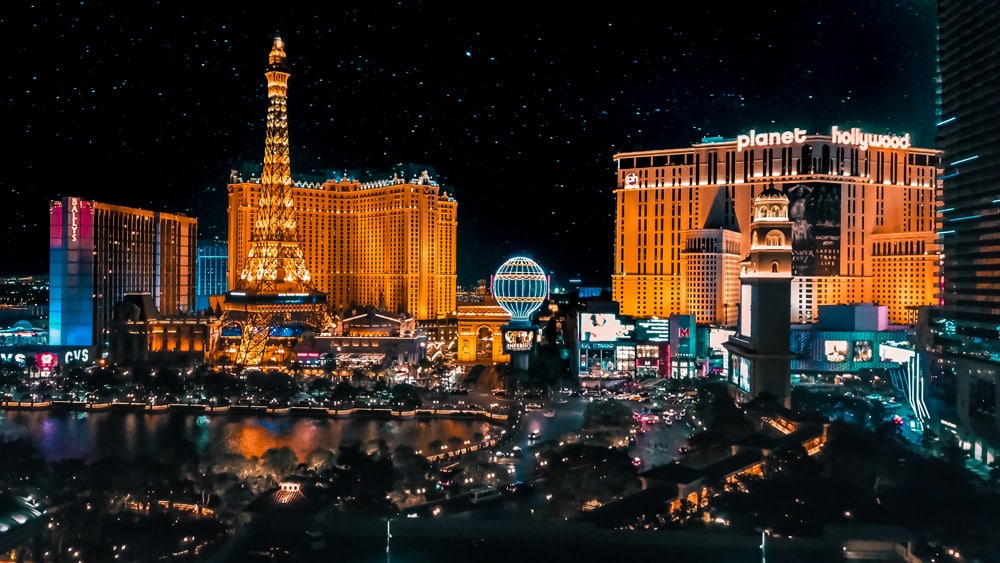
The Las Vegas Strip is a section of Las Vegas Boulevard South in Clark County, Nevada, known for its concentration of resort hotels and casinos. The Strip is approximately 4 miles long and is located just south of the Las Vegas city limits in the unincorporated towns of Paradise and Winchester, but is often referred to simply as “Las Vegas”.
Many of the largest hotels*, casinos, and resort complexes in the world are located on the Strip, which is known for its modern architecture, lights and wide variety of attractions. The hotels, casinos, restaurants, high-rise residences, entertainment venues and skyline have made the Strip one of the most popular and recognizable destinations in the world and one of the driving forces behind the Las Vegas economy. Most of the Strip has been designated an All-American Road, and the North and South Las Vegas Strip routes are classified as Nevada Scenic Byways and National Scenic Byways.
Entertainment
The Las Vegas Strip is known for its lounges, showrooms, theaters, and nightclubs. Most of the attractions and shows on the Strip are located on the grounds of the hotel casinos. The most popular free attractions that can be seen from the Strip include the water fountains at the Bellagio, the volcano at The Mirage and the Fall of Atlantis and Festival Fountain around Caesars Palace. There are several Cirque du Soleil shows, such as Kà at the MGM Grand, O at the Bellagio, Mystère at Treasure Island and Michael Jackson: One at Mandalay Bay.
Many well-known artists have performed in Las Vegas, including Elvis Presley, Frank Sinatra, Wayne Newton, Dean Martin, Sammy Davis Jr. and Liberace.Lately, Céline Dion, Britney Spears, Barry Manilow, Cher, Elton John, Bette Midler, Diana Ross, Donny and Marie Osmond, Garth Brooks, Jennifer Lopez, Reba McEntire, Mariah Carey, Shania Twain, Criss Angel, Olivia Newton-John, Queen + Adam Lambert, Lady Gaga and Gwen Stefani have made guest appearances at the various resorts on the Strip. The only movie theater directly on the Strip was the Regal Showcase Theatre, with ten screens in the Showcase Mall. The cinema opened in 1997 and was operated by the Regal Entertainment Group until its closure in 2018.
Anyone visiting Las Vegas should not miss out on a visit to the Strip. Many visitors make their dream of driving along the Las Vegas Strip in a cool US car come true. There are numerous car rental companies in the area for this purpose.
7. Millennium-Park (Chicago)
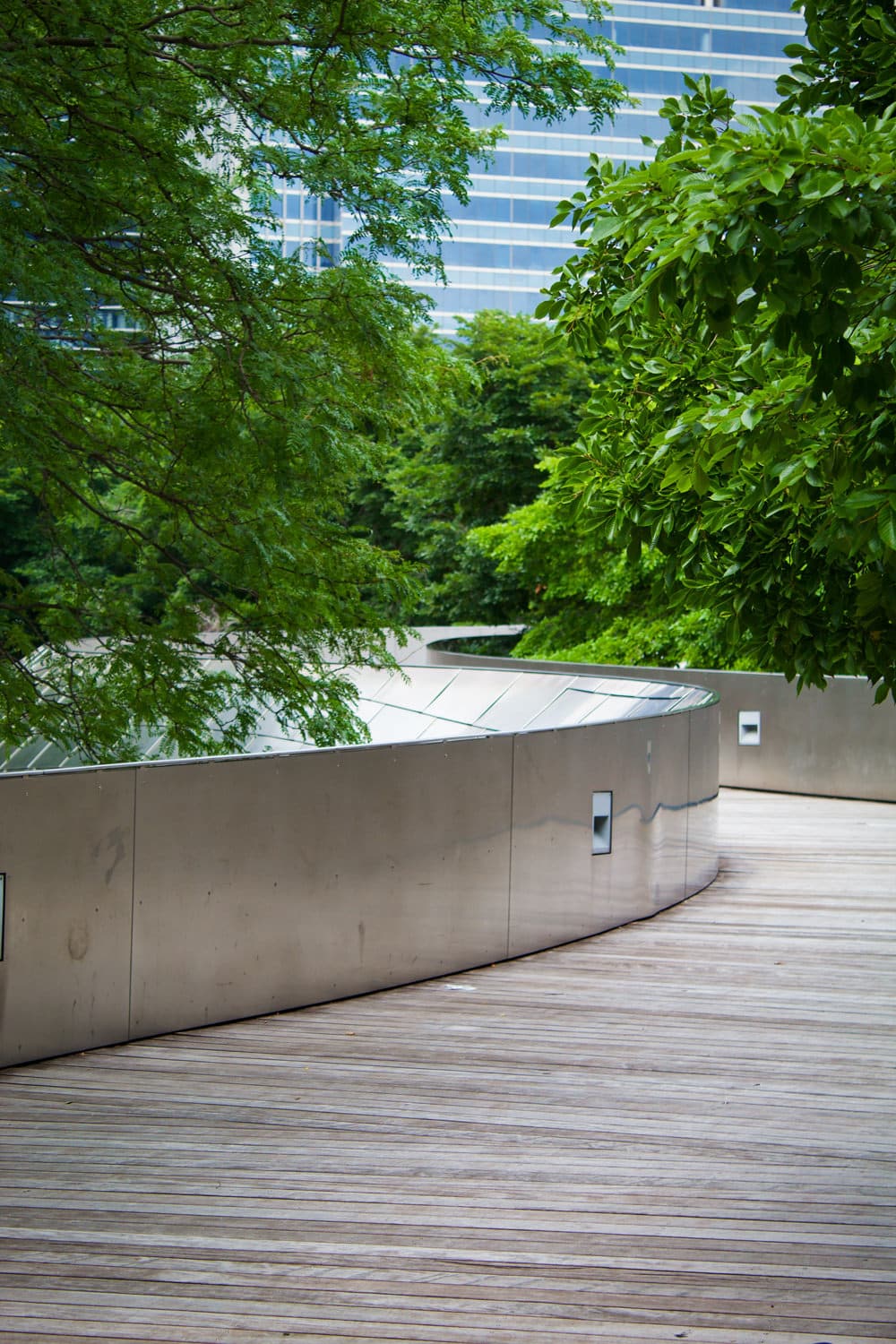
Millennium Park is a public park in the Chicago Loop, a district of Chicago in the US state of Illinois. It is operated by the Chicago Department of Cultural Affairs and managed by MB Real Estate. Created to celebrate the third millennium, the park is a prominent urban center near the shores of Lake Michigan and encompasses a 9.9-hectare section of northwest Grant Park. Previously, the area contained parkland, the Illinois Central railroad tracks and parking lots. Bordered by Michigan Avenue, Randolph Street, Columbus Drive and East Monroe Drive, the park features various public art. After Navy Pier, Millennium Park is the most popular tourist attraction in Chicago, and for several years it was also the most popular tourist attraction in the Midwestern United States. In 2015, the park became the site of the city’s annual Christmas tree lighting.
Planning for the park began in October 1997, construction began in October 1998 and the Millennium Park finally opened on July 16, 2004, four years later than planned. The three-day opening celebrations were attended by around 300,000 people and included an opening concert by the Grant Park Orchestra and Chorus. The park received various awards for its accessibility and green design. Admission to Millennium Park is free. It includes the Jay Pritzker Pavilion, the Cloud Gate, the Crown Fountain, the Lurie Garden and various other attractions. The park is connected to other parts of Grant Park via the BP Pedestrian Bridge and the Nichols Bridgeway. Since the park sits atop a parking garage and the Millennium commuter rail station, it is considered the world’s largest rooftop garden.
Historians consider Millennium Park to be the city’s most important project since the 1893 World’s Fair. The original budget of 150 million dollars was far exceeded. The final cost of 475 million dollars was borne by Chicago taxpayers and private donors. The city paid 270 million dollars, private donors paid the rest and assumed about half of the financial responsibility for the cost overrun. Construction delays and cost overruns have been blamed on poor planning, numerous design changes and cronyism. Nevertheless, many critics have praised the completed park.
Recently, Millennium Park has been the most popular tourist destination in Chicago and the Midwest and is one of the top ten in the United States with around 25 million annual visitors. Anyone visiting Chicago* should definitely make a detour to Millennium Park — in addition to its impressive size, it also boasts various cultural attractions and a rich variety of flora and fauna.
Ad
8. Route 66
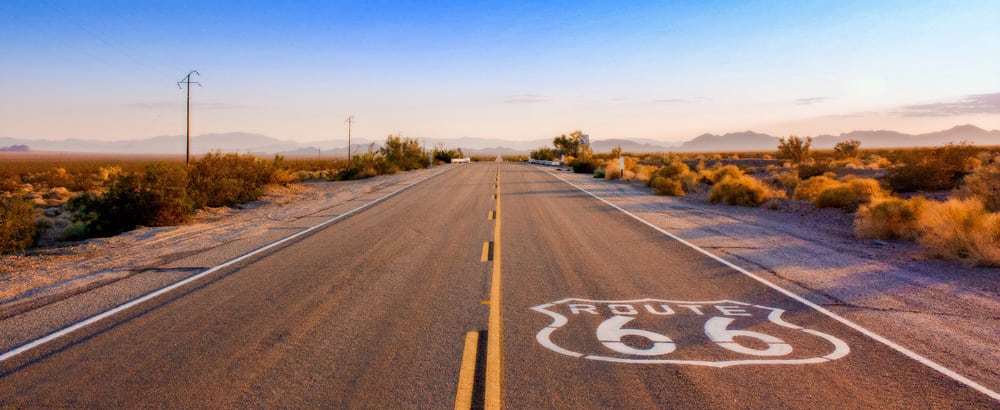
U.S. Route 66 or U.S. Highway 66, also known as Will Rogers Highway, Main Street of America or Mother Road, was one of the original highways of the U.S. Highway System. US 66 opened on November 11, 1926, and the road signs were erected the following year. The highway, which became one of the most famous roads in the United States, originally ran from Chicago, Illinois, through Missouri, Kansas, Oklahoma, Texas, New Mexico and Arizona before ending in Santa Monica in Los Angeles County, California. The total length was 2,448 miles (ca. 3,940 kilometers).
In pop culture, it became famous through the hit “(Get Your Kicks on) Route 66” and the television series “Route 66”, which was broadcast on CBS from 1960 to 1964. In John Steinbeck’s classic American novel “The Grapes of Wrath” (1939), the road “Highway 66” symbolizes escape and loss.
US 66 served as the main route for those emigrating west, especially during the Dust Bowl of the 1930s, the road boosted the economy of the communities it passed through. Later, these same people fought to keep the highway alive in the face of increasing threats from the new Interstate Highway System.
US 66 has been improved and redesigned several times over the course of its existence. In 1985, it was officially removed from the United States Highway System after being replaced in its entirety by sections of the Interstate Highway System. Portions of the road that ran through Illinois, Missouri, New Mexico and Arizona were designated as a National Scenic Byway under the name “Historic Route 66”, causing the name to reappear on some maps. Several states have included significant bypassed sections of the former US 66 as “State Route 66” in their state road networks. The corridor is also being redesignated as “U.S. Bicycle Route 66”, part of the United States Bicycle Route System, which was developed in the 2010s.
Route 66: no longer worth seeing?
The fact that Route 66 is now considered by many experts to be hardly worth seeing is mainly since its historical significance is simply no longer there. As already described, there are several alternative routes and more modern roads, so that little more than a myth remains of the old Route 66. Although there are still some souvenir stores and hotels along the road, many of these institutions are more or less fakes, or to be more precise, buildings that are modeled on the original institutions on Route 66, i.e., they are not originals.
Nevertheless, there are still many fans who love “their” Route 66. And anyone on a round trip in the southwest of the USA should not be afraid to pay a visit to Route 66. In most cases, there is no getting around this fact, as you will almost inevitably travel a few miles on the old Route 66 on your way through the southwest.
This is the case, for example, if you want to visit the Grand Canyon and then continue towards Los Angeles. Then you will pass places like Flagstaff, Williams, Seligman, Kingman and Oatman — all small towns that still exude at least some original charm of Route 66.
A short detour to the old Route 66 is also worthwhile in Arizona, where you can still find the real, old and now abandoned petrol stations as well as cafés, old water towers and other facilities, most of which are now empty and some of which are already completely derelict. If you love the morbid charm and enjoy exploring lost places, you’ll get your money’s worth here.
And don’t be surprised at the numerous letterboxes along the road, for which no matching houses can be found. They are also relics of the old Route 66 and the houses that were completely demolished. The same applies to the countless stones that have been left by the roadside. Many of them bear the names of Americans who traveled on the road and who wanted to leave a lasting impression of themselves in the truest sense of the word. All of this invites you to take beautiful photos to take home. But if possible, avoid stopping in one of the kitschy souvenir stores along Route 66. As a rule, you will only find things here that no real fan would really want.
Ad
9. Disney World (Florida)
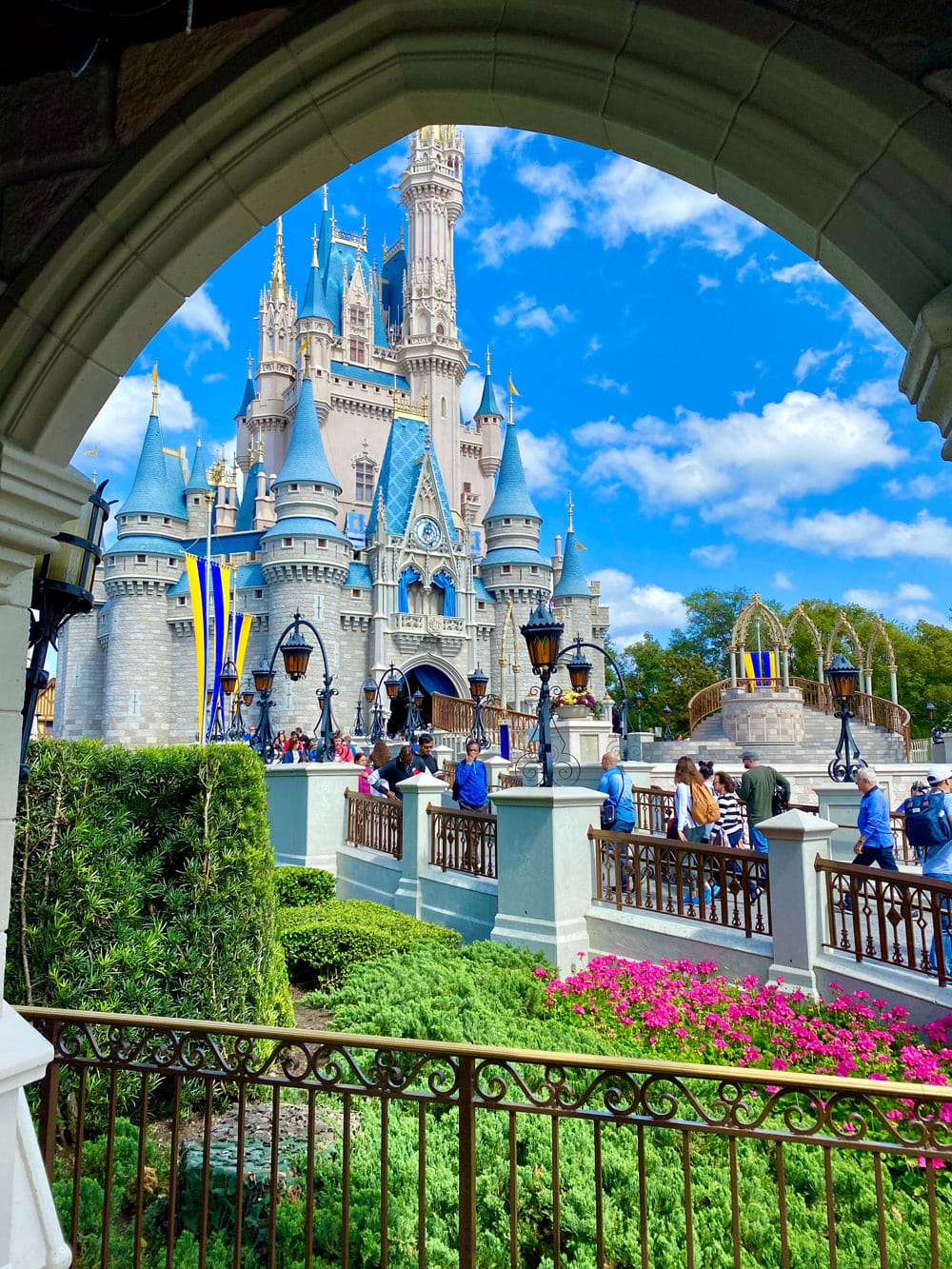
The Walt Disney World Resort, also known as Walt Disney World* or Disney World, is an entertainment center in Bay Lake and Lake Buena Vista, Florida — near the cities of Orlando and Kissimmee. The resort was opened on October 1, 1971, and is operated by Disney Parks, Experiences and Products, a division of The Walt Disney Company. The site covers over 100 km², although only around half of this has been used to date.
The resort comprises four theme parks.
- Magic Kingdom, Epcot, Disney’s Hollywood Studios and Disney’s Animal Kingdom,
- two water parks (Disney’s Blizzard Beach and Disney’s Typhoon Lagoon),
- 31 Theme Hotels,
- nine non-Disney hotels,
- several golf courses,
- one Camping Resort
- and other entertainment options, including the Disney Springs shopping center.
The complex, which was designed to complement Disneyland in Anaheim, California, which opened in 1955, was developed by Walt Disney in the 1960s. “The Florida Project”, as it was called, was intended to be an independent vision with its series of attractions. Walt Disney’s original plans also included an “Experimental Prototype Community of Tomorrow” (EPCOT), a planned community that would serve as a testing ground for innovations in urban living.
Walt Disney died on December 15, 1966, while the initial plans for the complex were underway. After his death, the company struggled with whether the Disney World project should be realized. However, Walt’s older brother Roy came out of retirement to ensure that Walt’s biggest dream would be realized after all. Construction began in 1967, with the company instead building a resort similar to Disneyland and abandoning the experimental concepts for a planned community. The Magic Kingdom was the first theme park to open in the complex in 1971, followed by Epcot (1982), Disney’s Hollywood Studios (1989) and Disney’s Animal Kingdom (1998). It was Roy who insisted on changing the name of the entire complex from Disney World to Walt Disney World to ensure that people would remember that the project was Walt’s dream.
In 2018, Walt Disney World was the most visited vacation destination in the world, with an average of more than 58 million visitors per year. The resort is the flagship of the global Disney Group and has become an integral part of American culture. In 2020, Walt Disney World was selected as the venue for the NBA Bubble to resume play for the 2019-20 National Basketball Association season at the ESPN Wide World of Sports Complex.
Walt Disney World (as well as Disneyland) is covered by an FAA no-fly zone that restricts all airspace activity without U.S. federal government authorization, including the use of drones. This level of protection is otherwise only imposed on U.S. critical infrastructure (such as the Pantex facility), military bases, the Washington Special Flight Control Area, DC Metropolitan Area, official presidential travel and Camp David.
In 2020, Disney World began laying off 6,500 employees and was only operating at 25% capacity after reopening during the COVID-19 pandemic.
10. Disneyland (California)
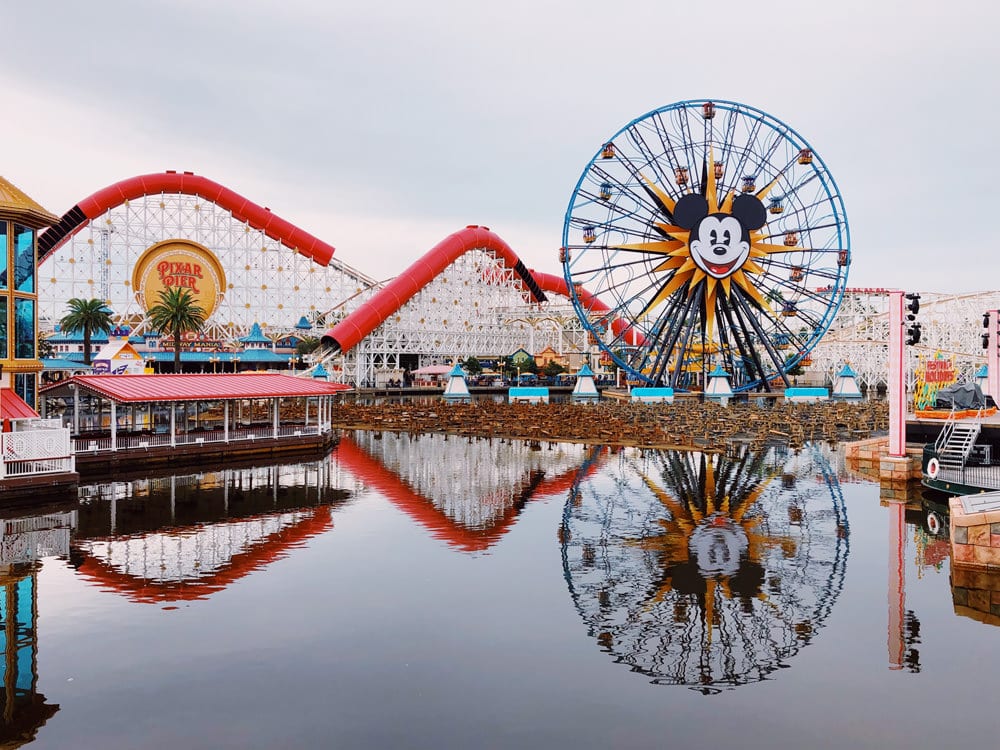
The Disneyland Resort, commonly known as Disneyland, is an entertainment center in Anaheim*, California. It is owned by the Walt Disney Company and operated by its Parks, Experiences and Products division. It is home to two theme parks (Disneyland Park and Disney California Adventure), three hotels and a shopping, dining and entertainment district known as Downtown Disney.
The resort was developed by Walt Disney in the 1950s. When it opened on July 17, 1955, it consisted of Disneyland, the 100-acre parking lot (with 15,167 parking spaces) and the Disneyland Hotel, which was operated by Disney’s business partner Jack Wrather. Following the success of the business model with multiple parks and hotels at Walt Disney World in Lake Buena Vista, Florida, Disney acquired large tracts of land near Disneyland to apply the same business model in Anaheim.
As part of the expansion, the entire complex was renamed Disneyland Resort, while the original theme park was renamed Disneyland Park. The company acquired the Disneyland Hotel from the Wrather Company and the Pan Pacific Hotel from the Tokyu Group. The Pan Pacific Hotel was renamed Disney’s Paradise Pier Hotel in 2000. In 2001, Disney’s Grand Californian Hotel & Spa, a second theme park called Disney California Adventure and the Downtown Disney shopping, dining and entertainment district were added.
The concept
Walt Disney’s early concepts for an amusement park envisioned a “Mickey Mouse Park” to be located next to the Walt Disney Studios in Burbank (now the West Coast headquarters of ABC). As new ideas emerged, Walt and his brother Roy realized that the Burbank location would be too small for the project and hired a consultant from the Stanford Research Institute to provide them with information on locations and economic feasibility. The consultant recommended a remote site in Anaheim, adjacent to the Santa Ana Freeway then under construction. The consultant correctly predicted that this location — then still covered with orange groves — would become the population center of Southern California. Since the site was far from the population centers of Southern California in the 1950s, Walt Disney wanted to build a hotel so that Disneyland visitors who had to travel a long way could stay overnight. However, as the park was running out of funds, he negotiated a deal with Hollywood producer Jack Wrather to build and operate a hotel called the Disneyland Hotel across the street from Disneyland.
Note: Links marked with an asterisk (*) or “Ad” are so-called affiliate links. As an Amazon partner, we earn from qualified sales. The same applies to other partners. This means that we receive a small commission on purchases or bookings to finance this site. There are no additional costs for you!




